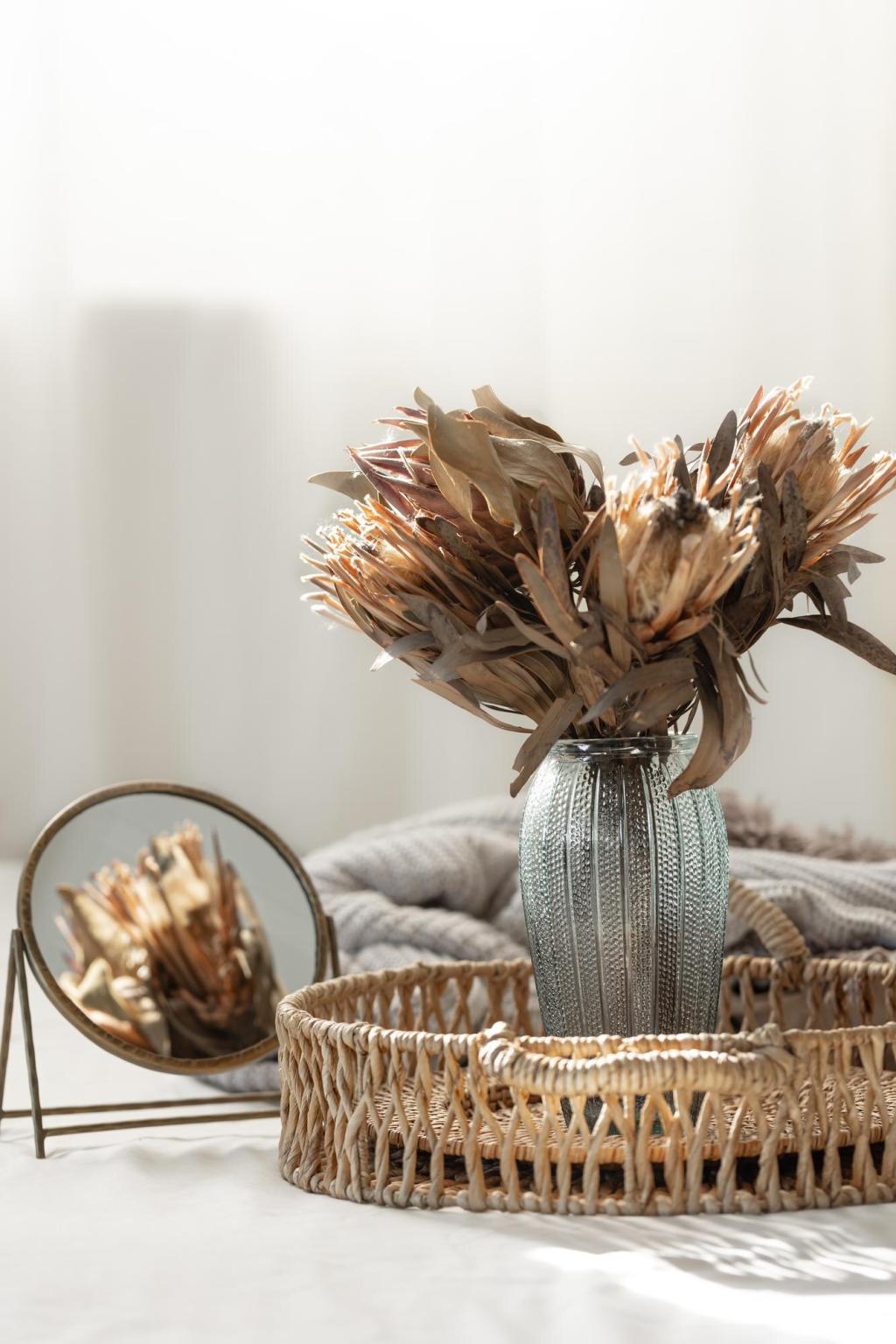
Green Innovations in Home Decor for 2024
Sustainability and eco-friendly living are rapidly shaping the landscape of home decor in 2024. As homeowners strive to reduce their environmental impact while maintaining stylish and comfortable living spaces, innovative green solutions have taken center stage. This year’s trending home decor ideas highlight environmentally conscious materials, energy-saving technologies, and nature-inspired designs that blend seamlessly into modern homes. These green innovations go beyond aesthetics, offering healthier living environments and encouraging responsible consumption. Let’s explore the leading trends and transformative concepts that are defining the future of eco-smart interior decorating.

Upcycled and Recycled Furnishings
Upcycling and recycling have become fundamental in the world of green home design. Rather than discarding old items, innovative methods revitalize them for renewed use—infusing spaces with stories and reducing landfill waste. Recycled glass countertops, repurposed wood tables, and metal light fixtures made from salvaged materials are becoming prized centerpieces in modern homes. These choices not only deliver unique character and charm but also minimize the carbon footprint associated with manufacturing new products. The popularity of upcycled decor demonstrates that sustainability and style can blend seamlessly, transforming waste into treasured elements of home design.

Bamboo and Fast-Growing Alternatives
Bamboo, cork, and other fast-growing alternatives are rising stars in sustainable interior design. Due to their rapid regeneration rates, these materials require fewer resources and recover quickly from harvesting, making them an eco-conscious choice. Bamboo flooring, wall panels, and furniture are celebrated for their strength, beauty, and minimal environmental impact. Designers are also exploring innovative uses of jute, rattan, and other renewable fibers for carpets and accents that echo nature’s elegance. The appeal of these materials lies not only in their green credentials but also in their versatility and harmonious appearance in any decor theme.

Non-Toxic and Low-VOC Finishes
Homeowners are increasingly aware of the health implications of conventional paints, varnishes, and adhesives, which often release volatile organic compounds (VOCs) into the air. As a result, the demand for non-toxic and low-VOC finishes has surged. Paints made with natural pigments, water-based sealants, and adhesives derived from plant sources ensure cleaner indoor air and a safer environment for families. These products are available in a wide variety of hues and sheens, ensuring that style is never sacrificed for sustainability. By choosing non-toxic finishes, residents safeguard their well-being without compromising on design possibilities.
Energy-Efficient Technologies
Smart lighting has become a hallmark of efficient home design, offering unprecedented control over energy use and ambiance. Intelligent systems allow users to program lighting schedules, dim lights remotely, and optimize energy consumption in real time. LED fixtures, which consume far less electricity than traditional bulbs and have a longer lifespan, are the foundation of these systems. Motion sensors ensure that lights are only active when spaces are occupied, dramatically reducing waste. Beyond efficiency, smart lighting adapts to mood and activity, seamlessly blending sustainability with sophisticated design.
Heating and cooling represent significant portions of a household’s energy expenditure, but advances in climate control technology are changing the narrative. Programmable thermostats and smart HVAC systems adjust temperature and airflow according to occupants’ preferences and daily routines. Advanced systems can learn usage patterns and incorporate weather data to maximize comfort while minimizing energy use. Some even integrate with renewable energy sources, such as solar panels, to further curb emissions. By automating the most energy-intensive functions, homes become more responsive and eco-friendly, proving that technology and environmental responsibility can coexist effortlessly.
Solar technology is no longer limited to rooftop panels; it has found its way into a range of home features, seamlessly merging renewables with daily life. In 2024, solar-integrated blinds, garden lighting, and even outdoor furniture are commonplace. These elements capture and store solar energy during the day for use at night or in low-light conditions, providing cost-effective, emission-free power. By dispersing solar capabilities throughout the home, residents can reduce their reliance on grid electricity and lower their overall carbon footprint. The embrace of solar integration symbolizes a move toward decentralized, accessible renewable energy for all.


Previous slide
Next slide
